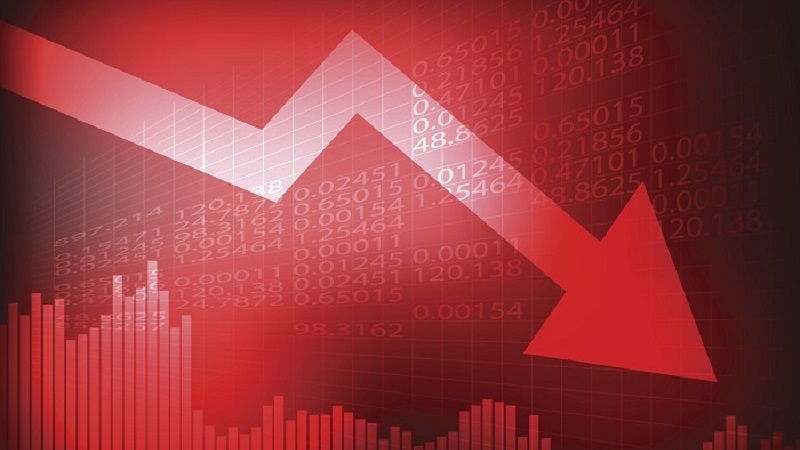The relative health of the UK economy is under scrutiny. The International Monetary Fund (IMF) delivered the grim verdict that the UK economy would contract 0.6% this year, a worse performance than Russia and the only advanced economy set to decline. However, the latest GDP data showed the country narrowly avoiding recession, and the Bank of England giving a marginally more upbeat assessment on its prospects.
How should investors reconcile these apparently conflicting verdicts?
Pierre-Olivier Gourinchas, chief economist and director, research department, IMF, points out that the UK has actually done relatively well over the past 12 months, with growth for 2022 revised to 4.1%. In this, it chimes with the Q4 GDP data.
The real challenge is that structural problems in the UK economy are likely to exert a persistent drag on the economy in the year ahead. Gourinchas says there are three elements to the IMF’s 0.9% downward revision to its UK growth estimates in the year ahead: natural gas prices, employment levels and monetary tightening.
He says: “First, there is the exposure to natural gas – and we’ve had a very sharp increase in natural gas prices, energy prices in the UK. There is a larger share of energy that is coming from natural gas with a higher passthrough to final consumers […] there’s been a stronger cost of living crisis in the UK.
“The second is that UK employment levels have not recovered to pre-pandemic levels. This is a situation where you have a very, very tight labour market but you have an economy that has not reabsorbed as many people into employment as it had before. And, of course, that means there is less output, less production.”
It means higher wages, which raise costs for companies. It has also contributed to strikes, which dampen economic activity. Filippo Cartiglia, director on the investment team at Fulcrum Asset Management, says this is the key reason the economy has struggled to grow: “Total hours worked in Q3 2022 were 1.1% below their Q4 2019 level. Moreover, the employment inactivity rate – those who are not working, nor seeking to work – was 1.2% higher than 2019’s level while the employment rate was 1.1% lower: meaning fewer people in the labour market and fewer jobs being created.
“This labour shortage explains why GDP growth has been so challenging, even though another key metric, the unemployment rate, is lower than it was pre-pandemic: 3.7% in Q4 2022 compared to 3.8% in Q4 2019. The fact of the matter is, the UK is suffering from a more severe supply constraint issue than other G7 countries.”
The final element is the monetary tightening. The UK tends to be more exposed to high interest rates than its peers. Gourinchas says: “The UK has a fairly high share of adjustable rate mortgages. So, when The Bank of England starts increasing rates, it feeds into the rates that mortgage holders are paying. And that is also weighing down on activity.”
There are mitigating factors that may give a short-term boost to the UK economy. Gas prices are coming down, for example. Steven Bell, chief economist (Emea) at Columbia Threadneedle Investments, says that the warmer spring weather should see people use less energy, giving them more money in their pockets. They may finally have enough confidence to draw down on their Covid piggy banks (savings built up during the pandemic), which – in contrast to the US – remain largely untouched.
However, it doesn’t get round the structural issues of the UK economy, which require greater root and branch reform than seems plausible under the current administration. As such, while the UK economy may limp along narrowly avoiding recession, it is difficult to build a more compelling growth picture.
The state of the UK economy famously doesn’t matter for the FTSE 100. If anything, it benefits from weaker growth if it leads to a depreciation in sterling, which flatters the international earnings of the UK’s largest companies. More recently, the pound’s improvement against the dollar has stalled and large companies have continued to perform well since the start of 2023.
However, the ongoing poor sentiment around the UK may continue to impact smaller companies. The sector has recovered in January and February after a disastrous year in 2022, which saw the average fund fall 25.2%. While some of this weakness was an adjustment after a strong performance in 2021, the sector has undoubtedly been hit by the general gloom about the UK economy. European and North American smaller companies also struggled, but not to the same extent.
UK smaller companies fund managers point to the relative valuation of small caps. The MSCI UK Small Cap index is currently trading on a forward P/E of 11.8x, compared to 15.9x for its global peers. This is still higher than the large cap index, which is currently 10.3x, but this is dragged lower by the cheap valuations of some energy and mining companies. The equivalent statistic for the MSCI World is 16.1x. It is also worth noting that the dividend yield on the UK Small Cap index, at 3.1%, is almost as high as for the large cap index, at 3.6%.
Certainly, this would suggest a good moment to re-examine the sector. The problem remains that small-cap sentiment correlates with sentiment on the UK economy. Smaller companies have occasionally defied the prevailing economic environment – in late 2020, for example – and this has often come after a period of weakness. Investors need to hope that it will only take a small shift in sentiment to move the dial on smaller company valuations.











